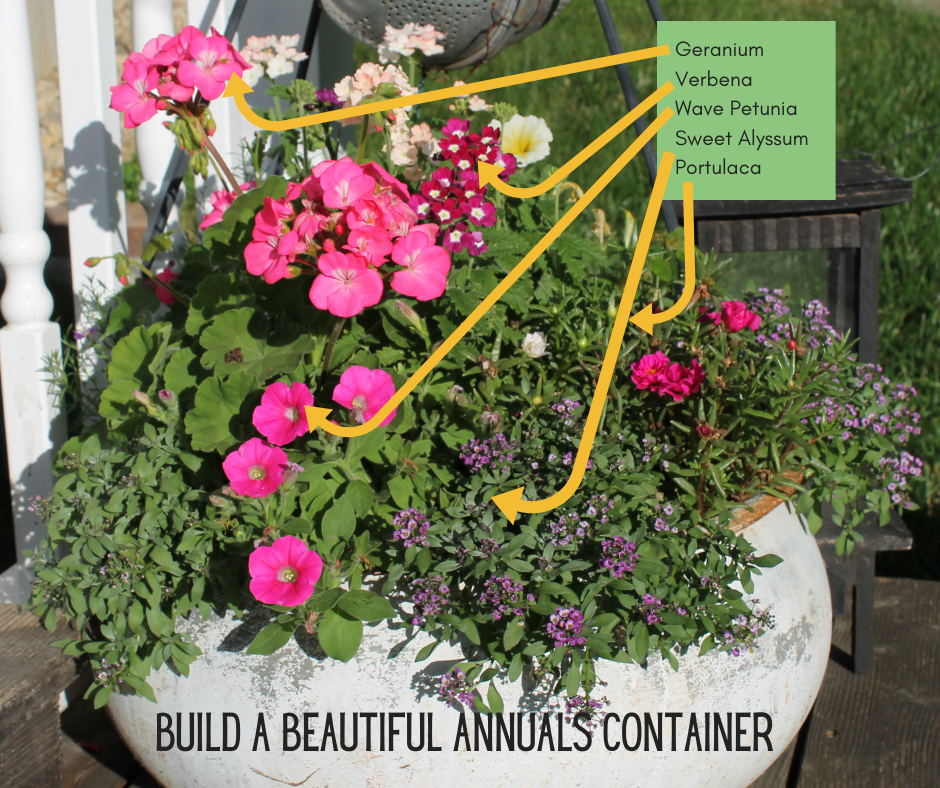
Planting your own containers is a great way to stretch your budget and gives you the ultimate creative freedom as you can pick the exact colors and textures to match your designs.
Selecting the right combination is easy if you follow the thriller-filler-spiller formula used by professional garden designers. This concept works for every container from a narrow window box to large front entry pots and the three elements work together to create beauty and balance within the container. Using this approach will give you long-lasting pots that look professionally designed. Just remember to group plants with similar sun and water requirements.
TIP: Don’t overlook the herb and veggie aisle for your pots . . . many have great textures, colors, and scents that will add interest to your containers.
There are hundreds of ways to combine your favorite flowers and plants and here are just a few suggestions to get you started (bonus hint: plants shown in bold also repel mosquitoes!):
- Thriller: This is the centerpiece used to draw the eye to the container and create drama in the composition. Choose something for bold color, height, structure, or for all three. Examples of good thrillers include dahlia, geraniums, lemon grass, calla lilies, gerbera daisies, or the upright growing Thai Gong Bao hot pepper plant.
- Filler: These plants ring the lower half of the thriller, hiding the stems, and filling the space with more color and texture. Choose plants that stay at a medium height with a mounding growth pattern such as lantana, non-trailing petunia, dusty miller, coleus, or impatiens.
- Spiller: This portion of your pots tucks in under the fillers and spills over the edge of your pot, creating another layer of color and texture to showcase the thriller. Good selections for spillers include wave petunias, alyssum, vinca vines, or the edible and lovely creeping lemon thyme.
Try adding plants and flowers that actually repel mosquitoes (yes, some of your favorites are also hated by skeeters and biting insects. Try these groupings for planters that only get bigger and more protective as summer goes on.

